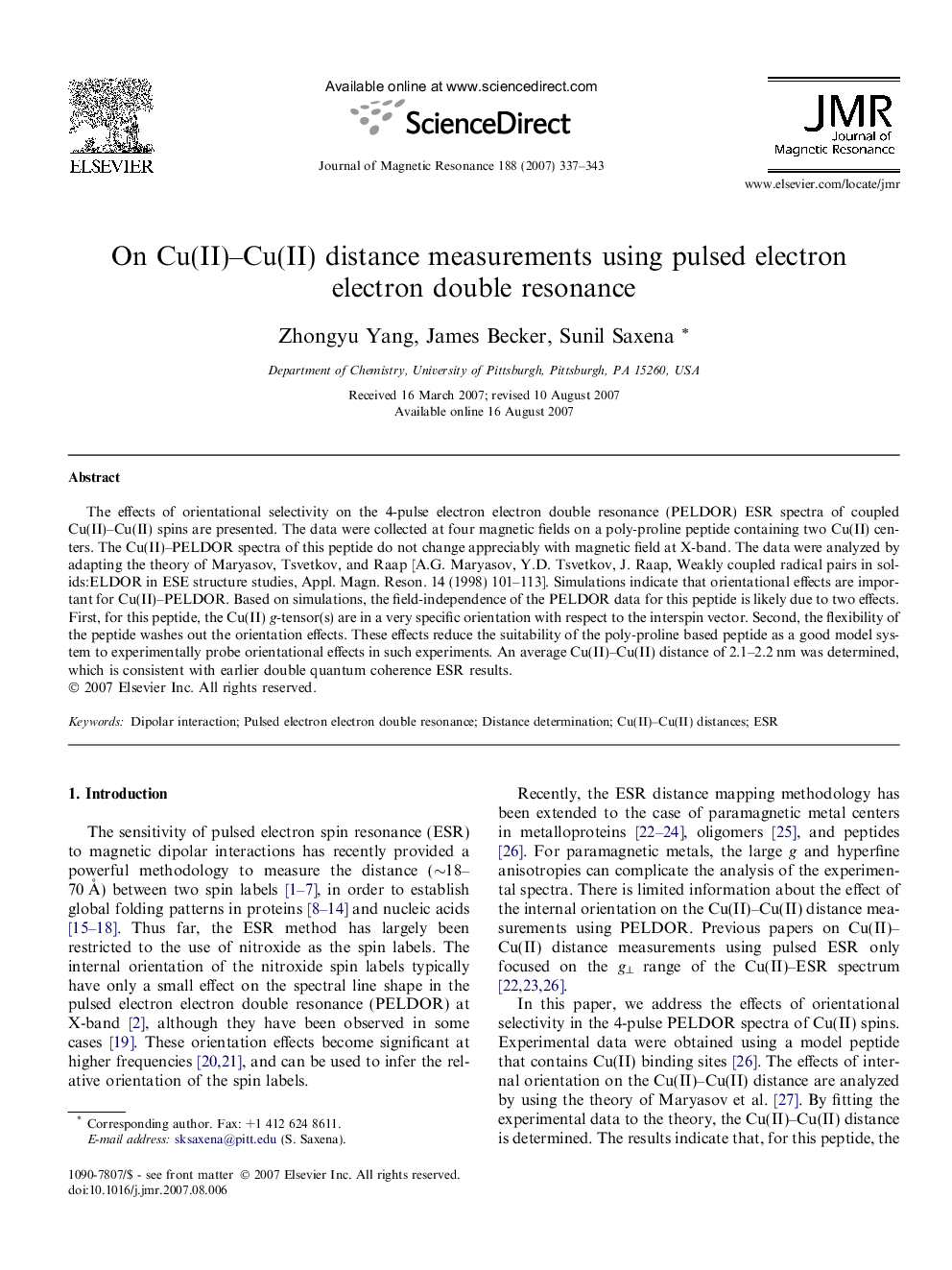| Article ID | Journal | Published Year | Pages | File Type |
|---|---|---|---|---|
| 5407336 | Journal of Magnetic Resonance | 2007 | 7 Pages |
Abstract
The effects of orientational selectivity on the 4-pulse electron electron double resonance (PELDOR) ESR spectra of coupled Cu(II)-Cu(II) spins are presented. The data were collected at four magnetic fields on a poly-proline peptide containing two Cu(II) centers. The Cu(II)-PELDOR spectra of this peptide do not change appreciably with magnetic field at X-band. The data were analyzed by adapting the theory of Maryasov, Tsvetkov, and Raap [A.G. Maryasov, Y.D. Tsvetkov, J. Raap, Weakly coupled radical pairs in solids:ELDOR in ESE structure studies, Appl. Magn. Reson. 14 (1998) 101-113]. Simulations indicate that orientational effects are important for Cu(II)-PELDOR. Based on simulations, the field-independence of the PELDOR data for this peptide is likely due to two effects. First, for this peptide, the Cu(II) g-tensor(s) are in a very specific orientation with respect to the interspin vector. Second, the flexibility of the peptide washes out the orientation effects. These effects reduce the suitability of the poly-proline based peptide as a good model system to experimentally probe orientational effects in such experiments. An average Cu(II)-Cu(II) distance of 2.1-2.2Â nm was determined, which is consistent with earlier double quantum coherence ESR results.
Related Topics
Physical Sciences and Engineering
Chemistry
Physical and Theoretical Chemistry
Authors
Zhongyu Yang, James Becker, Sunil Saxena,
